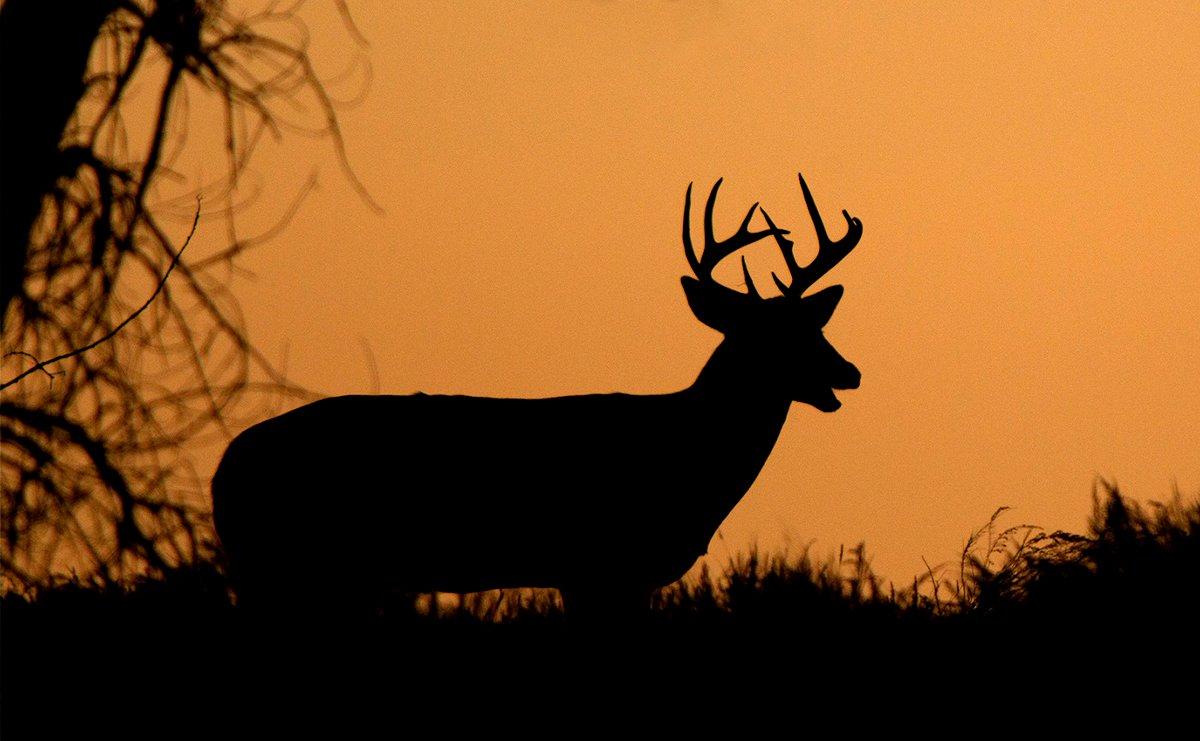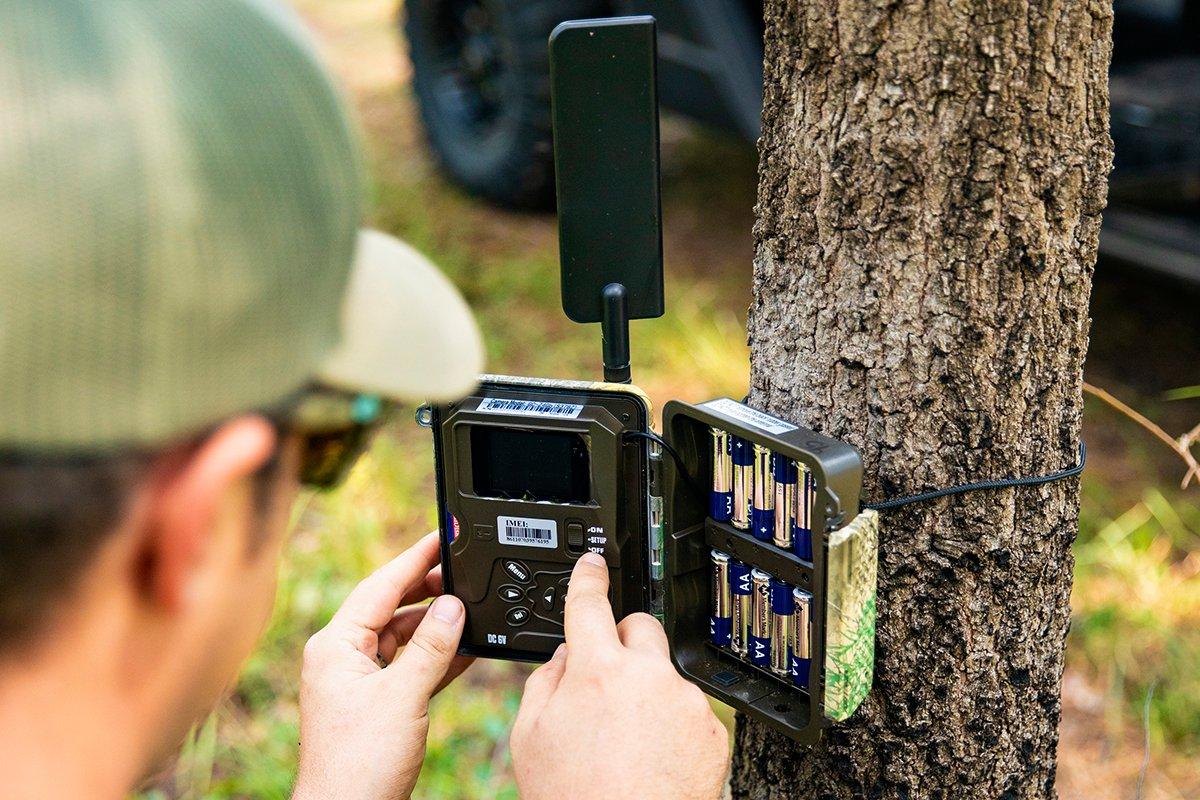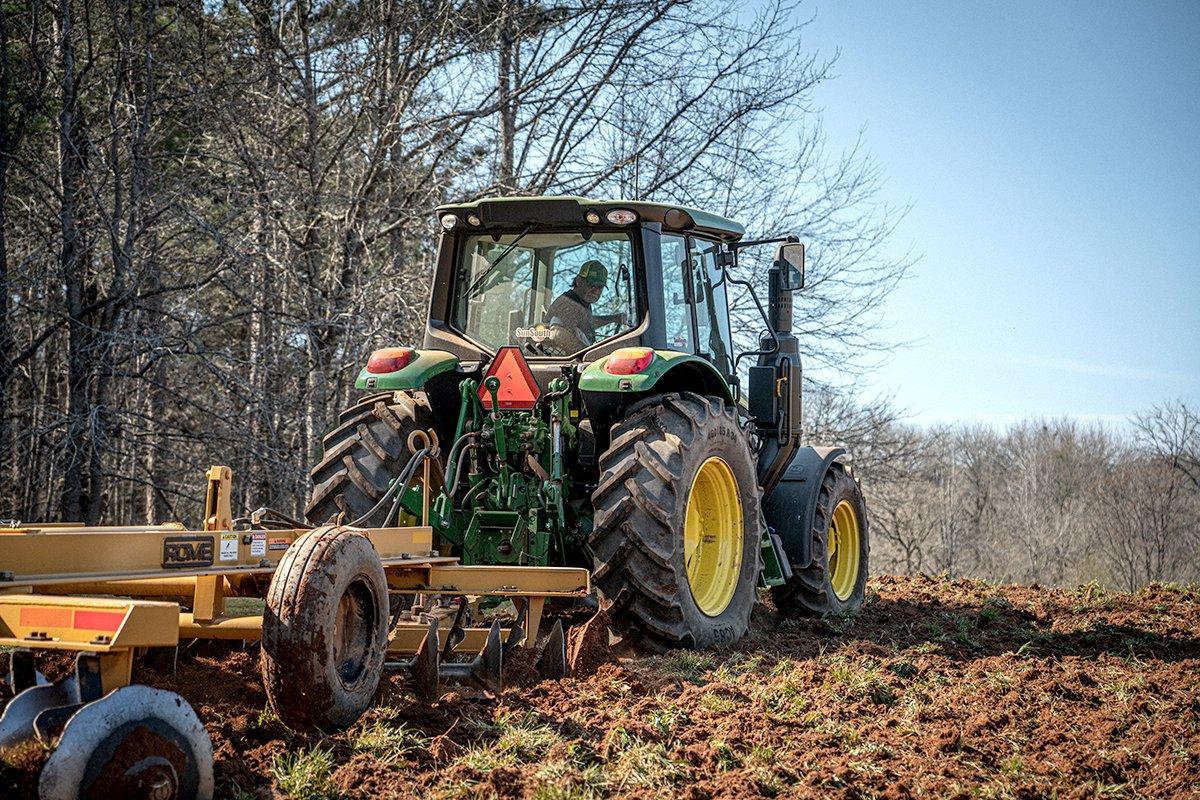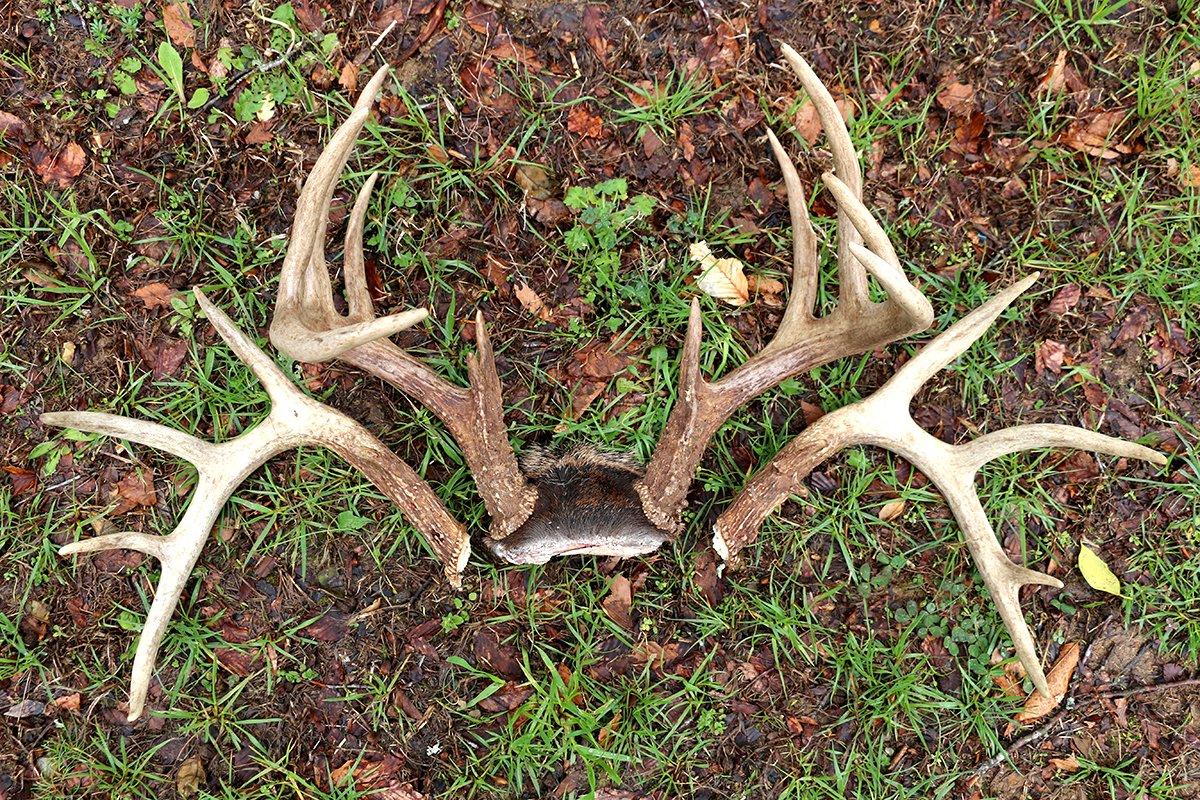Predict encounters with target bucks by scouting smart and prepping right now
The winter woods seem almost too calm, with beams of sunlight showing through the canopy and onto the snow. Then the silence is broken by a limb snapping behind me. A slow turn of my head reveals a big 10-pointer I'd followed for two years. The season before, in the late season of 2021, I missed the buck in nearly this same spot. In fall of 2020, he walked past my ground blind just before I got there. But today, I'm ready.
I slowly grab my bow and wait for a shot opportunity, coming to full draw three different times as the buck moves through the timber. Finally, he enters an opening, and I settle my 30-yard pin and shoot. The green lighted nock disappears behind the shoulder, and the buck dashes down into the ravine. I finally tag the big 10 with a split brow.
That January hunt wouldn't have happened without a lot of prior off-season planning. I spent the spring and summer pulling together plans to target that specific buck during each phase of the season including the early season, pre-rut, rut, post-rut, and late season.
My early season and pre-rut plans failed. I saw the buck during the rut, but he passed through just out of range. He disappeared during the post-rut. But he returned during the late season, and I finally connected on January 7. Obviously, some plans I created failed. But one of them worked. If you create phase-based objectives for each of your target bucks, chances are one will work. Here are steps to take when creating these game plans.
Step 1: Learn Your Ground Better
It's crucial that we never stop scouting the grounds we hunt, regardless of how long we've hunted them. Doing so helps discover things we've never noticed, or new changes we'd otherwise miss. These things impact how deer use and maneuver through the landscape.
I spent the late winter of the previous year walking the entire property and learning the trail network where I killed the 10. This helped me to understand the exact trails deer were taking from point A to B. Eventually, that led me to the stand location where I arrowed the buck.
Step 2: Chart Your Territories
Scouting your hunting grounds involves more than a walk in the woods. It's crucial to take notes while doing so. Use an app to mark beds, trails, scrapes, rubs, food sources, water sources, and more. Leave your app tracks turned on and walk each deer trail on the property. This paints a picture as to how deer use the ground and will reveal potential hotspots to hunt. You can even chart treestands and trail cameras, or at least good potential locations for them.
(Don't Miss: 5 Best Stand Setups for Pre-Rut Bowhunting)
Step 3: Study Past Intel
Prior history is some of the most valuable information you can have when hunting specific bucks. Study trail camera photos and reflect on past sightings to know what specific bucks did, when they did it, and under what conditions and circumstances. Often, these patterns can be similar from year to year, and that provides an excellent starting point for game planning.
This big 10-pointer was an excellent example of this. I knew the buck spent the winter on the southern end of the property, and that's where I missed him during the previous late season. I even found one of his sheds just down the hill from there. Both things hinted at where to focus during the colder months.
Step 4: Scout with Purpose
With prior knowledge of the land and potential target bucks in mind, it's time to begin scouting. Use existing knowledge to begin accruing the most information you can garner. Analyze maps. Check current crop rotations. Study mast production. Glass from afar. Scout on foot, but with deer season closing in, be less intrusive. Every scouting act should be carefully considered and done with a purpose.
Step 5: Deploy Trail Cameras
With good trail camera locations in mind, deploy these incredible scouting tools. A quality cellular model with great battery life, such as the Spartan GoCam, Spartan Ghost, or Spartan GoLive, is great for providing real-time information that doesn't require multiple trips to pull cards. Most cameras can be set up and adjusted with their respective mobile apps, but always prep them ahead of time with fresh batteries and cards, and it never hurts to verify the settings at home.
Also, hang cameras in layers, meaning that some should be closer to or farther from bedding areas. Some cameras should be on the edges of food sources, while others should be deeper into cover, such as in staging areas and even the fringes of bedding areas. Placing cellular models in more sensitive locations can reduce applied pressure. That's what I did. I placed cameras in layers, and only checked those closer to daytime-use areas when I pushed in to hunt there.
Regardless of where cameras are located, keep them off a buck's radar by hanging them higher and angling them downward. Check cameras infrequently and from vehicles, ATVs, bikes, etc. when possible, to leave less scent behind. During the pre-season, check traditional cameras no more than once per month.
Then, study the latest crop of bucks and their patterns. Use antler size and characteristics, body composition, head shape, and other key identifiers such as scars or ripped ears to determine if bucks are returnees or newcomers.
Step 6: Plant Dedicated Micro Plots
Consider the bucks you have on camera, and those that might return at some point in the season. Analyze your hunting spots and determine the best locations to intercept these deer. Recognize the natural lines of movement deer use in the area, and plant dedicated micro plots that intercept deer along these routes. Furthermore, plant food plot species that coincide with the peak attraction timing of the destination food sources deer are traveling to. In some instances, landowners or the terrain might not allow food plots. Both were true in my case. So, where legal, it can pay off to establish a bait pile.
(Don't Miss: 3 Awesome Stands for Gun Hunting the Rut)
Step 7: Position New Treestands and Blinds
No matter the number of years I hunt a property, I always find new stand locations to try. Properties change, and so do the deer that live there and their habits. Continue moving and fine-tuning treestand locations in hopes of intercepting one of your target bucks.
When positioning treestands, hang them in layers, just as you did trail cameras. This allows you to be either more or less aggressive in your approach. Once deer season arrives, stand selection will vary depending on how much your target buck is moving during daylight.
When hanging treestands, it's important to know just how the wind flows throughout the property, and how it behaves under each forecast wind direction. Remember, wind flows much like water. It flows with the terrain, and even bounces (swirls) around when blowing perpendicular to bluffs, ridges, and other terrain features.
Step 8: Beef Up Existing Treestand and Blind Locations
Existing treestand locations already in place should be checked for safety and maintenance. Repair or replace gear as needed. Furthermore, check for noise issues. Remove sticks, leaves, and other debris on the platforms and seats, and fix creaky contact points. Add cover as needed.
Step 9: Improve Entry and Exit Routes
A treestand is only as good as its entry and exit route. Study each treestand location and determine if you can make it there without pressuring deer. If you can't, scratch it. If you can, study the terrain and determine the routes best associated with it. Often, entry and exit routes can and should change based on the time of year.
That was true for this buck. When I hunted it during the early season and rut, I was forced to approach from the west. Once the late season arrived, my only option was to approach from the east. Bedding areas, food sources, travel routes, and available cover all impact this.
Some features provide consistent routes and include drainages, ditches, shallow waterways, standing crops, backsides of ridges, and other visual barriers. Study the terrain, and if it doesn't offer these things, consider creating it yourself. In sunny areas, screening crops such as Egyptian wheat and giant miscanthus can be planted strategically to hide your approach.
Step 10: Create Shot Opportunities
Once treestand, ground blind, and access routes are in place, it's time to fine-tune these spots to create and enhance shot opportunities. You want to steer deer into your shooting lanes. Do this by hinge-cutting trees to blockade unwanted routes, planting row crops in directions that facilitate broadside shots, and more. Consider positioning mock scrapes, scrape trees, rubbing posts, and other things in strategic locations where you want deer to stop for a shot.
(Don't Miss: Aggressive Deer Calling Strategies)
Bonus: Prep a Mobile Setup
It's important to have permanent stand setups in place in spots that are historically good. This allows for the quietest possible approach and slipping into position without the need of hanging a treestand. That said, it's also important to prep a mobile setup that you keep on hand for special situations. At some point almost every season, you'll find deer doing unexpected things in places you didn't plan for. That's when you pull out your lightweight hang-and-hunt setup and move in for the kill.
Mistakes to Avoid
After positive steps are taken to make off-season game plans, avoid things that could unravel your hard work. One mistake is too much human intrusion. Once you've completed your scouting and preparation efforts, it's important to stay out of your hunting grounds. Applying unnecessary pressure is one of the fastest ways to ruin a good spot.
Another mistake is not following through on game plans you've created. Remember, you came up with those plans due to serious scouting intel. Trust and believe in the process, while continuing to adapt to new scouting information. Stick with original plans until new information tells you to do something a little different.
Once season arrives, strike when the time is right. Moving in too soon can lead to a botched effort before odds near their highest. Waiting too long can allow deer to shift out of the targeted pattern before you even hunt.
Still, chances are good that time will pass, and you'll blow right through some of the phase-based plans you pulled together for specific target bucks. When that happens, simply move on. Failing to shift with changing bedding areas, food sources, and travel patterns will put you a step behind target bucks, rather than ahead. That's the opposite of what off-season game planning is all about.
(Don't Miss: Hunt the Deep South's January Deer Rut)













